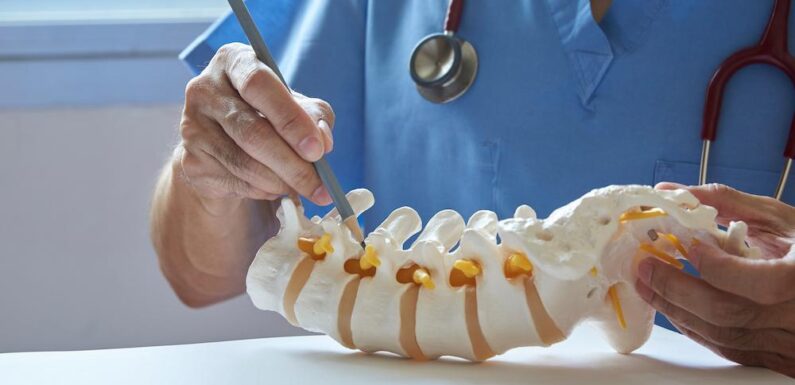
Spinal decompression surgery is a common treatment for conditions that cause compression of spinal nerves, such as herniated discs, spinal stenosis and spondylolisthesis. Traditionally, these procedures required large incisions, significant muscle disruption and long recovery times. However, minimally invasive techniques are transforming spinal decompression, offering patients faster recovery, less pain and fewer complications. Dr. Larry Davidson, a specialist in minimally invasive spinal surgery, highlights that these advancements provide effective relief while minimizing the impact on surrounding tissues.
What is Minimally Invasive Spinal Decompression?
Minimally invasive spinal decompression involves using advanced tools and techniques to relieve pressure on spinal nerves with as little disruption as possible to the surrounding muscles and tissues. Unlike traditional open surgery, minimally invasive spinal decompression uses advanced imaging, precise instruments and refined techniques to relieve nerve pressure while minimizing tissue disruption.
Conditions commonly treated with minimally invasive spinal decompression include:
- Spinal Stenosis: A narrowing of the spinal canal that puts pressure on nerves.
- Herniated Discs: A bulging or ruptured disc that compresses nerves in the spine.
- Spondylolisthesis: A condition where one vertebra slips over another, causing nerve compression.
How Minimally Invasive Techniques Work
Minimally invasive spinal decompression uses advanced imaging, specialized tools and techniques to create more space around compressed nerves while minimizing tissue disruption. Here are the main steps involved:
Preoperative Planning and Imaging: Before the surgery, detailed imaging (such as MRI or CT scans) is conducted to identify the exact location of nerve compression and develop a precise surgical plan.
Small Incisions and Tubular Dilators: The procedure begins with a small incision through which tubular dilators are inserted. These tubes gradually create a pathway to the spine by gently separating muscle fibers rather than cutting through them.
Use of Specialized Instruments and Endoscopes: Using an endoscope (a thin tube with a camera), the surgeon visualizes the affected area and inserts specialized instruments through the tubular dilators to remove the tissue or bone, causing compression.
Closure and Minimal Suturing: Once the decompression is complete, the instruments and dilators are removed, and the small incision is closed with minimal suturing.
Types of Minimally Invasive Spinal Decompression Techniques
Several minimally invasive decompression techniques are available, each tailored to specific conditions and patient needs. Here are a few of the most common:
- Endoscopic Discectomy
Endoscopic discectomy is a technique for treating herniated discs by removing the portion of the disc pressing on spinal nerves. Through a small incision, the surgeon inserts an endoscope and specialized tools to access and remove the damaged disc material.
Benefits: Compared to traditional discectomy, there is less muscle disruption, smaller incisions and shorter recovery times. Patients experience reduced pain and a quicker return to daily activities.
- Microdecompression
Microdecompression (Microdiscectomy) is a popular minimally invasive option for treating nerve compression due to herniated discs. Using a small incision and microscopic visualization, the surgeon removes a small portion of the disc to relieve pressure on the affected nerve.
Benefits: Microdiscectomy is effective in reducing sciatic pain and numbness caused by nerve compression. The procedure allows for precise decompression with minimal impact on surrounding tissues.
- Percutaneous Laser Disc Decompression
Percutaneous Laser Disc Decompression (PLDD) uses laser technology to reduce disc material and relieve nerve pressure. During the procedure, a laser probe is inserted through a tiny incision to vaporize a portion of the herniated disc, creating space for the nerve.
Benefits: Laser decompression is minimally invasive and provides quick relief for mild to moderate disc herniations. It requires only local anesthesia and offers a shorter recovery time compared to traditional surgery.
- Laminotomy and Foraminotomy
Laminotomy and foraminotomy are minimally invasive techniques for treating spinal stenosis and other conditions that cause nerve compression by removing a portion of the vertebra or enlarging the nerve passageways.
Benefits: These procedures create more space for the nerves without the need for extensive muscle dissection. Minimally invasive laminotomy and foraminotomy offer pain relief with less scarring and quicker recovery.
Advantages of Minimally Invasive Spinal Decompression
Minimally invasive techniques offer several potential benefits over traditional open spinal decompression, providing a promising alternative for many patients and surgeons. Key advantages include:
Reduced Recovery Time
One potential benefit of minimally invasive decompression is a generally shorter recovery period for many patients. By minimizing muscle disruption and tissue damage, these procedures allow patients to return to daily activities more quickly. Many patients can go home the same day or within 24 hours, and recovery typically takes a few weeks rather than several months.
Less Postoperative Pain
Since minimally invasive decompression requires only small incisions and preserves muscle tissue, patients experience significantly less postoperative pain. This reduction in pain often means less reliance on opioid pain medications, lowering the risk of side effects and dependency.
Lower Risk of Complications
Minimally invasive spinal decompression reduces the risk of common surgical complications, such as infections, blood loss and nerve damage. Smaller incisions and reduced tissue disruption mean a lower likelihood of scarring and surgical site infections, making these procedures safer for many patients.
Minimal Scarring
The small incisions used in minimally invasive procedures often result in minimal visible scarring. This is not only a cosmetic advantage but also reduces the risk of complications associated with larger incisions, such as scar tissue formation and postoperative discomfort.
Better Outcomes for Older Patients and High-Risk Individuals
For elderly patients or those with other health conditions, minimally invasive decompression provides a safer alternative to traditional surgery. These techniques place less stress on the body, making them suitable for patients who may not tolerate open surgery well.
Who is a Good Candidate for Minimally Invasive Spinal Decompression?
Minimally invasive spinal decompression is suitable for many patients, but certain factors determine eligibility:
Condition Severity: Mild to moderate cases of spinal stenosis, herniated discs and nerve compression are generally good candidates. More severe or complex cases may require a different approach.
Overall Health: Patients in good health with stable conditions are typically well-suited for minimally invasive techniques. However, older patients and those with underlying health conditions may also benefit, as these techniques reduce physical stress and recovery time.
Previous Surgical History: In cases where patients have undergone previous spinal surgeries, minimally invasive options may still be viable, but a thorough assessment by a specialist is necessary.
A Safer, More Effective Approach to Spinal Decompression
Minimally invasive techniques have introduced new options for spinal decompression, offering many patients a safer and often more comfortable alternative to traditional surgery. With benefits like reduced recovery time, minimal scarring and lower complication rates, these advancements are helping patients find effective relief with fewer risks. Dr. Larry Davidson remarks, “Minimally invasive spinal surgical techniques have resulted in a decrease in the length of certain surgeries, hospitalization time, potential for postoperative infection and readmissions to the hospital. All of this results in improved patient satisfaction.”
For those considering spinal decompression, consulting with an experienced spine surgeon can clarify the best options for achieving relief from pain and restoring mobility. As minimally invasive techniques continue to advance, these innovations hold promise for improved outcomes and smoother recoveries for many patients in need of spinal care.

